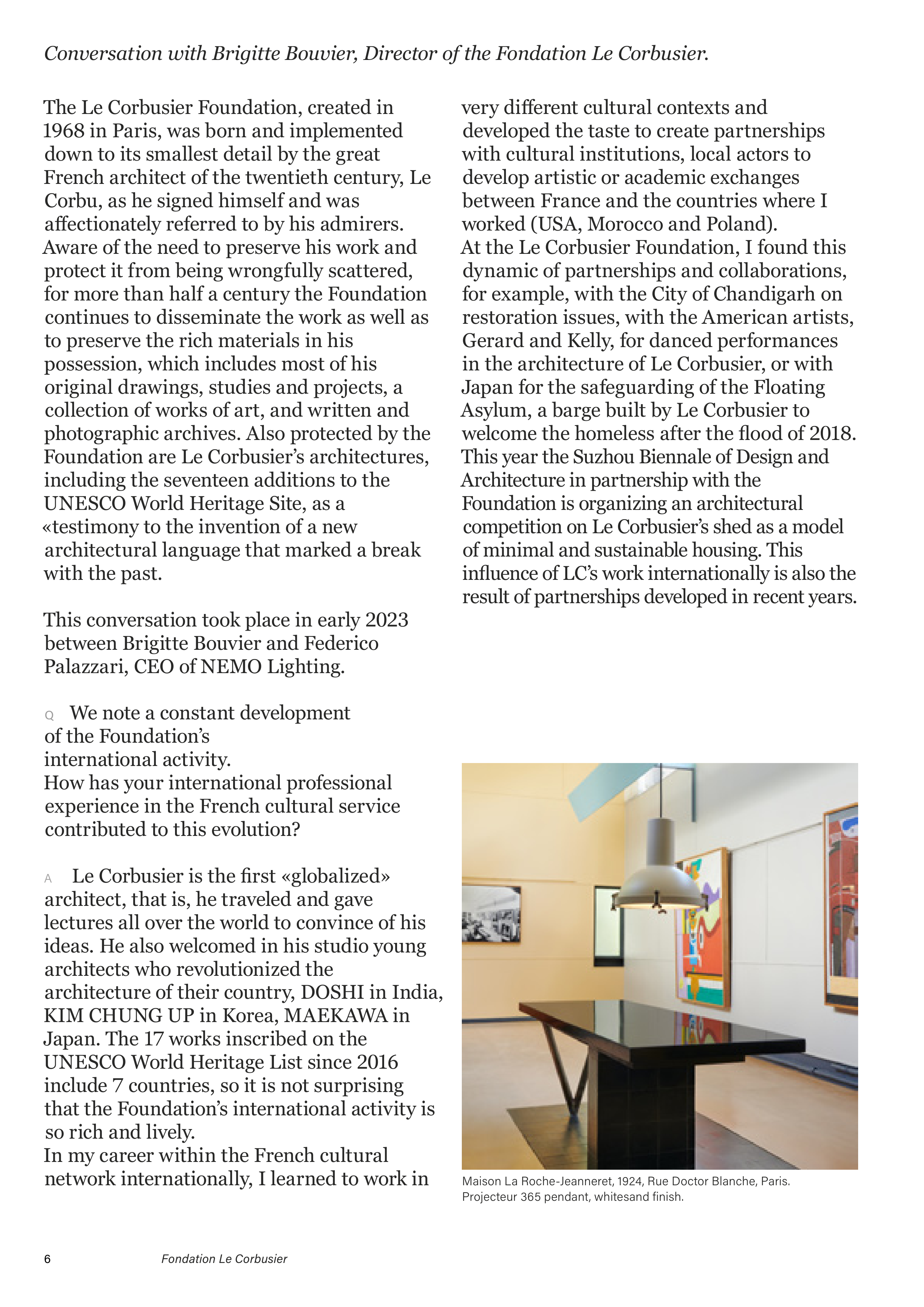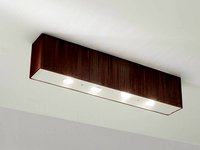6
The Le Corbusier Foundation, created in
1968 in Paris, was born and implemented
down to its smallest detail by the great
French architect of the twentieth century, Le
Corbu, as he signed himself and was
affectionately referred to by his admirers.
Aware of the need to preserve his work and
protect it from being wrongfully scattered,
for more than half a century the Foundation
continues to disseminate the work as well as
to preserve the rich materials in his
possession, which includes most of his
original drawings, studies and projects, a
collection of works of art, and written and
photographic archives. Also protected by the
Foundation are Le Corbusier’s architectures,
including the seventeen additions to the
UNESCO World Heritage Site, as a
«testimony to the invention of a new
architectural language that marked a break
with the past.
This conversation took place in early 2023
between Brigitte Bouvier and Federico
Palazzari, CEO of NEMO Lighting.
Q We note a constant development
of the Foundation’s
international activity.
How has your international professional
experience in the French cultural service
contributed to this evolution?
A Le Corbusier is the first «globalized»
architect, that is, he traveled and gave
lectures all over the world to convince of his
ideas. He also welcomed in his studio young
architects who revolutionized the
architecture of their country, DOSHI in India,
KIM CHUNG UP in Korea, MAEKAWA in
Japan. The 17 works inscribed on the
UNESCO World Heritage List since 2016
include 7 countries, so it is not surprising
that the Foundation’s international activity is
so rich and lively.
In my career within the French cultural
network internationally, I learned to work in
very different cultural contexts and
developed the taste to create partnerships
with cultural institutions, local actors to
develop artistic or academic exchanges
between France and the countries where I
worked (USA, Morocco and Poland).
At the Le Corbusier Foundation, I found this
dynamic of partnerships and collaborations,
for example, with the City of Chandigarh on
restoration issues, with the American artists,
Gerard and Kelly, for danced performances
in the architecture of Le Corbusier, or with
Japan for the safeguarding of the Floating
Asylum, a barge built by Le Corbusier to
welcome the homeless after the flood of 2018.
This year the Suzhou Biennale of Design and
Architecture in partnership with the
Foundation is organizing an architectural
competition on Le Corbusier’s shed as a model
of minimal and sustainable housing. This
influence of LC’s work internationally is also the
result of partnerships developed in recent years.
Maison La Roche-Jeanneret, 1924, Rue Doctor Blanche, Paris.
Projecteur 365 pendant, whitesand finish.
Conversation with Brigitte Bouvier, Director of the Fondation Le Corbusier.
Fondation Le Corbusier







